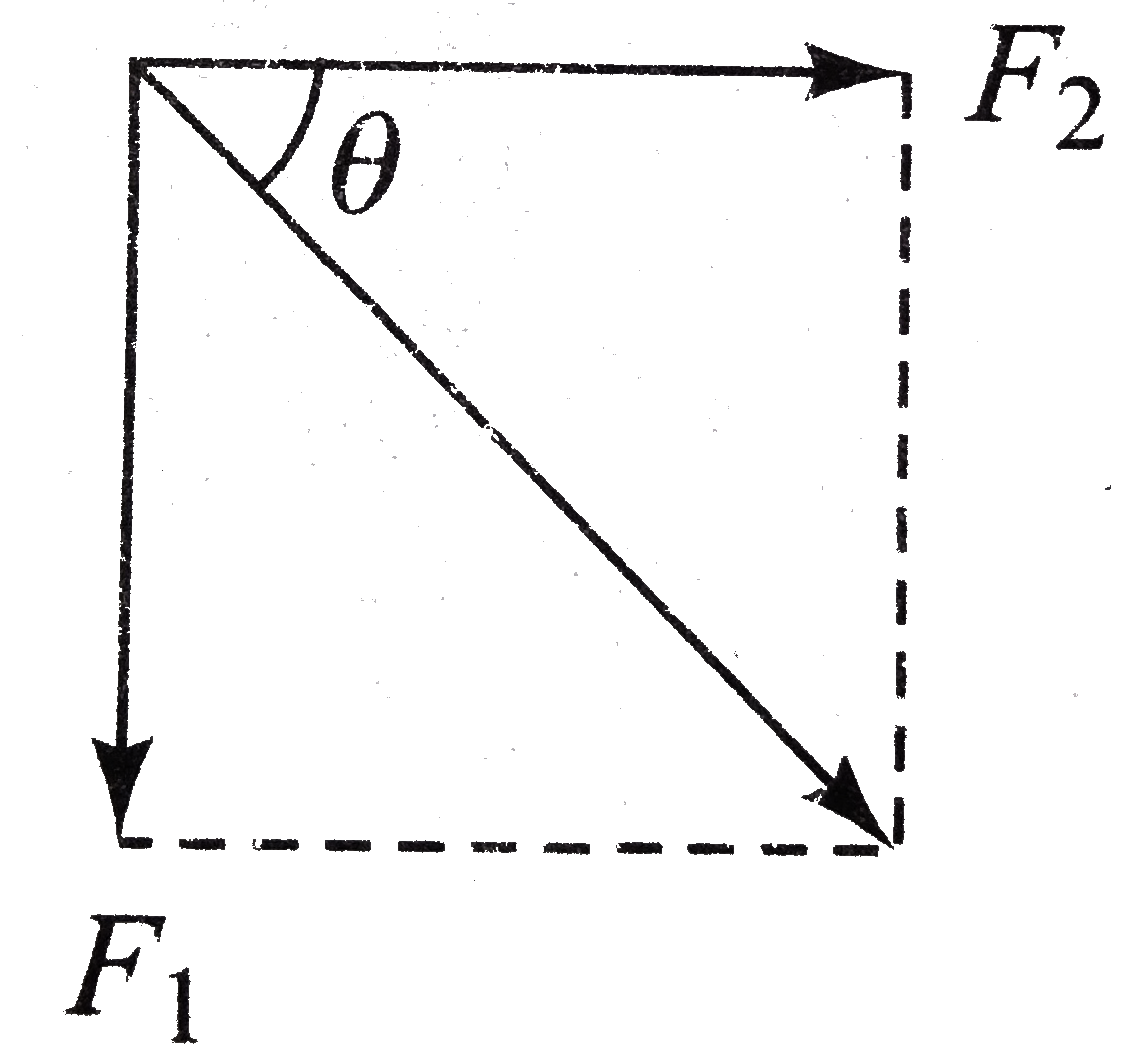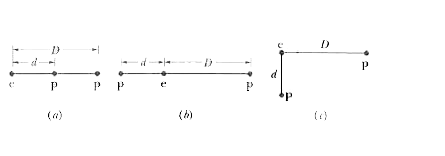Figure shows three arrangements of an electrons e and two protons p(where Dgtd)
(a) Rank the arrangement according to the magnitude of the net electrostatic force on the electron due to the protons placing the largest first.

(b) In situation (c), is the angle between the net force on the electrons and the line labeled horiontal less than or more than 45∘?


(a) It is clear from the diagram that
Fa>Fc>Fb
(b) Since F1>F2,tanθ=F1F2 or θ>45∘.
Topper's Solved these Questions
- COULOMB LAW AND ELECTRIC FIELDBOOK - CENGAGE PHYSICS ENGLISHCHAPTER - COULOMB LAW AND ELECTRIC FIELDEXERCISE - Subjective Type
15 Videos
- COULOMB LAW AND ELECTRIC FIELDBOOK - CENGAGE PHYSICS ENGLISHCHAPTER - COULOMB LAW AND ELECTRIC FIELDEXERCISE - Subjective
32 Videos
- COULOMB LAW AND ELECTRIC FIELDBOOK - CENGAGE PHYSICS ENGLISHCHAPTER - COULOMB LAW AND ELECTRIC FIELDEXERCISE - Solved examples
10 Videos
- CENGAGE PHYSICS DPPBOOK - CENGAGE PHYSICS ENGLISHCHAPTER - CENGAGE PHYSICS DPPEXERCISE - single correct type
14 Videos
- ELECTRIC CURRENT & CIRCUITSBOOK - CENGAGE PHYSICS ENGLISHCHAPTER - ELECTRIC CURRENT & CIRCUITSEXERCISE - Kirchhoff s law and simple circuits
15 Videos
Similar Questions
Calculate the number of electrons in a small, electrically neutral silver pin that has a mass of 10.0g. Silver has 47 electrins per atom, and its molar mass is 107.87gmol−1.
View SolutionSuppose that 1.0g fo hydrogen is separated into electrons and protons. Suppose also that the protons are palced at the earth's north pole and the electrons are placed at the south pole. What is the resulting compression force on earth? (Given that the radius of rarth is 6400 km).
View SolutionTwo balls of charges q1 and q2 initially have a velocity of the same nagnitude and direction. After a unform electric field has been applied for a certain time. The direction of the first ball changes by 60∘ and the velocity magnitude is reduced by half. The direction ofvelocity of the second ball changes by 90∘. In whata ratio will hte velociyt of the second ball change? Determine, the magnitude of the charge to mass ratio of the ball if it is equal to α1 for the firt ball. Ignore the electrostatic interactin between the balls.
 ,
,
View Solutionddx(√x+1√x)2=
View SolutionIn the circuit element given here, if the potential at point B, VB=0, then the potentials of A and D are given as ltBrgt

View SolutionIn the nucleus of helium if F1isthe≠tforcebetweentwopro→ns,F_2isthe≠tforcebetweentwo≠utronsandF_3 is the net force between a proton and a neutron. Then,
View SolutionFigure shows three arrangements of an electrons e and two protons p(where Dgtd) (a) Rank the arrangement according to the magnitude of the net electrostatic force on the electron due to the protons placing the largest first. (b) In situation (c), is the angle between the net force on the electrons and the line labeled horiontal less than or more than 45^(@) ?
View SolutionThe figure shows four arrangement of three particles of equal masses. Rank the arrangement according to the magnitude of the net gravitational force on the particle m, greatest first.
View SolutionFigure 1(a).24 shows two protons (symbol P) and one electron (symbol e) on a straight line AB. What is the direction of net electrostatic force on the central proton?
View SolutionThe ratio of magnitude of electrostatic force and gravitational force for an electron and a proton is
View SolutionA proton is nearly 1,836 times more massive than the electron. The Coulomb force of repulsion between two protons separated by a finite distance is F. The electrostatic force between two electrons separated by the same distance is:
View SolutionThe figure shows two protons (symbol p) and one electron (symbol e) on an axis. On the central proton, what is the direction of (a) the force due to the electron, (b) the force due to the other proton, and (c ) the net force ?
View SolutionThe figure here shows three arrangements of an electron e and two protons p. (a) Rank the arrangement according to the magnitude of the net electrostatic force on the electron due to the protons, largest first. (b) In situation c, is the angle between the net force on the electron and the line labelled d less than or more than 45∘ ?

View SolutionA proton and an electron are placed 1.6cm apart in free space. Find the magnitude of electrostatic force between them. The nature of this force.
View SolutionThe ratio of magnitude of electrostatic force and gravitational force for an electron and a proton is
View Solution

